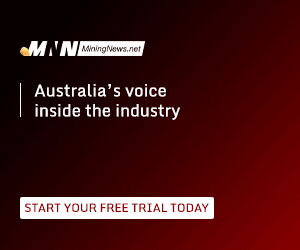This article is 9 years old. Images might not display.
In a joint statement, Eagle Graphite CEO Jamie Deith referred to various international collaborations between would-be graphite producers and research organisations when he said most existing projects focused on end products that “will be too expensive for anything other than niche applications”.
“In Eagle’s view, these will never be consequential in terms of graphite volume,” Deith said.
“This initiative is different because the objective is a process with sufficiently modest costs to make it practical for potentially large target markets.”
Shares in Eagle, also traded on the US OTC and Frankfurt markets, were flat on the news. The company had a market capitalisation at the start of this week of C$10.8 million (US$8.2 million).
“Multi-layered graphene is partially exfoliated graphite in the form of nanoparticles having more than 10 layers of graphene and a relatively high length-to-thickness ratio,” said associate professor of chemical engineering at Queens University, Dr Aristides Docoslis.
“This material can be the key-ingredient in the production of new and technologically advanced composite materials that are much needed in emerging industrial sectors, including the aerospace and automotive sector, sports equipment, and emerging alternative-energy and fuel cell industries.
“They can also be used in the application of protective coatings that provide antibacterial protection, super-hydrophobicity, or chemical resistance. During our collaboration with Eagle Graphite we will identify a physical process that is scalable, cost-effective, and can produce multi-layered graphene of sufficient quantity and quality.”
NSERC is described as a federal government agency that selectively invests in research at the “frontier of knowledge”.
George Hawley, a former research and development chemist with UK synthetic graphite manufacturer Morgan Crucible company, has been made a consultant to the project. Hawley, who now runs Supermin Enterprises, worked with auto-makers Ford, General Motors, Chrysler and Volkswagen, and plastics producers GE, DuPont, GAF, and Hercules, to pioneer breakthrough work on the reinforcement of plastics using high aspect ratio mica flake. This led to expansion of material production levels in this field to 30,000 tonnes per year.
“Plastics have widespread uses because they are versatile and inexpensive,” Hawley said.
“However, for applications needing strength and stiffness plastics need reinforcements to make composites such as carbon fibre. Carbon fibres are 10-times stronger than steel, weigh 80% less, and can be moulded in their final form. The use of carbon fibre is steadily increasing in passenger jets, where the reduced weight results in lower fuel consumption and less air pollution. The automobile industry, facing increasingly stringent CAFE standards, or for electric vehicles, increasing demands for battery range, will require similar weight reductions. However, carbon fibre is still too expensive for most automobiles, and significant cost reductions are unlikely with existing processes.
“The addition of multi-layered graphene to carbon fibre could potentially deliver both an increase in strength and a substantial reduction in cost, resulting in a composite that is practical for the bodies of mass produced automobiles.
“Successful market penetration of such a product would be expected to consume up to 140,000 tonnes of graphite per year.
“This is the rationale for the NSERC/ENGAGE grant research. It will delaminate Eagle Graphite flakes to make multi-layered graphene, by processes that are scalable to industrial production.”

























